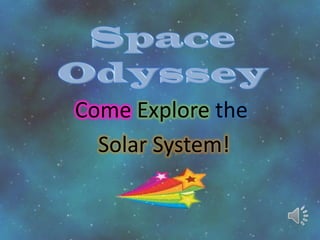This document provides an overview of our solar system through an interactive space odyssey. The journey begins by explaining how the heliocentric model and telescope led to the discovery of the solar system. It then explores the sun's characteristics and classifies the planets as terrestrial, gaseous, or dwarf. Details are given about each planet from Mercury to Neptune before concluding the odyssey.



















